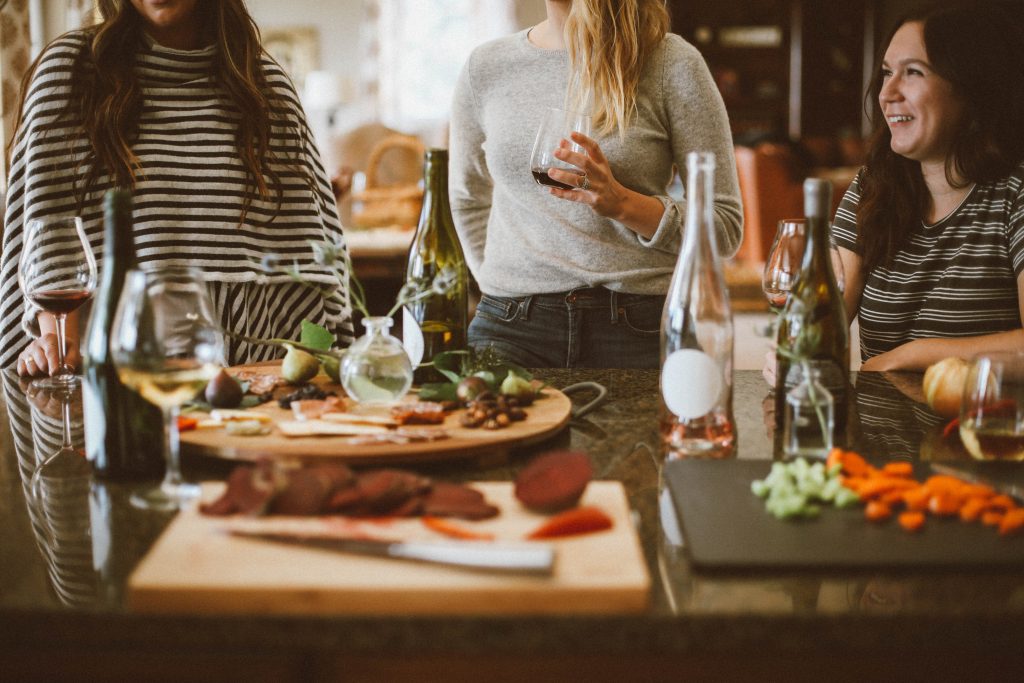“Eat food, not too much, mostly plants.”
-Michael Pollan
Let’s break this down:
- Eat food – REAL food. What is real food anyway? It’s all those items in the produce section, that don’t have nutrition labels. Those colorful roots and toasty seeds we find at the farmer’s markets, and even the fresh meats, eggs, and dairy that comes from the farm. It’s “vegetables, fruits, whole grains, and, yes, fish and meat — NOT ‘edible food-like substances.’”
- Not too much. Portion control. This means consuming enough to properly nourish yourself (carbohydrates, fat, and protein – with all the good vitamins and minerals), satiating yourself as well, but not going overboard. Eating until your belly is happy – and then stopping there.
- Eat mostly plants. Does that mean we need to roam around like giraffes, noshing on leaves and berries? Not quite. It means that research shows it does a body good to eat a mostly plant-based diet – your plate should be chalk full of fruits, veggies, and grains, with things like meat and dairy (and animal fat) lining the edges and acting as a condiment.

So, on the outside that all seems pretty easy, right?
“Seems”is the key word here.
In today’s society, we are constantly on the go, driving, running from here to there, working, typing, surfing the web, scrolling through social media, etc. Not only is this detrimental to our psyche, it’s neither so great for our hearts nor our waistlines. Multi-tasking is a thing, but not so great a thing when it comes to eating. Eating on the go and abandoning a proper sit-down meal schedule, we eat too fast, we overeat, and we reach for foods of convenience, rather than nourishment. Most of us know fast food is not the best choice for us, but neither is scarfing down an apple at a stoplight or inhaling three boxes of “healthy” cereal on the couch. Thus, in defense of food, it’s not always just the actual food we are consuming that leads to the health crisis we face in America today. It’s the WAY we eat it – our mindset, our emotions, and our presence (or lack of presence).
America has the highest obesity rates of any nation in the world. We are also the country that most sacrifices meal time. Traditional European meals can last for hours on end. Meal time is about much more than just the food. Coming to the table and conversing and consuming together is about community, connection, and life. It’s about the experience of food that brings us together, changes our mindset, allows us to be present with our people and our food, and keeps us healthy. After all, that’s really what life is all about: relationships and connection – and food is partof life! And, those who adopt this lifestyle, slowly eating and actually enjoying meals across the sea, have much lower risk of heart disease and obesity. Oh, and by the way, have you ever noticed that after a long dinner party lasting several hours, with lots of friends and lots of smiles, you may have eaten some indulgent items, but you don’t feel too full and you just “feel better?” Yep – that’s combining food and flavor with fascinating company. It’s magical and it’s mindful.
So, think about Michael Pollan’s suggestions of eating real food, not too much, and mostly plants – but also think about what that truly means. Enjoy your meal. Savor your meal and your thoughts AND the experience. Relish in your life and live in a cornucopia of (mostly plant) abundance!

